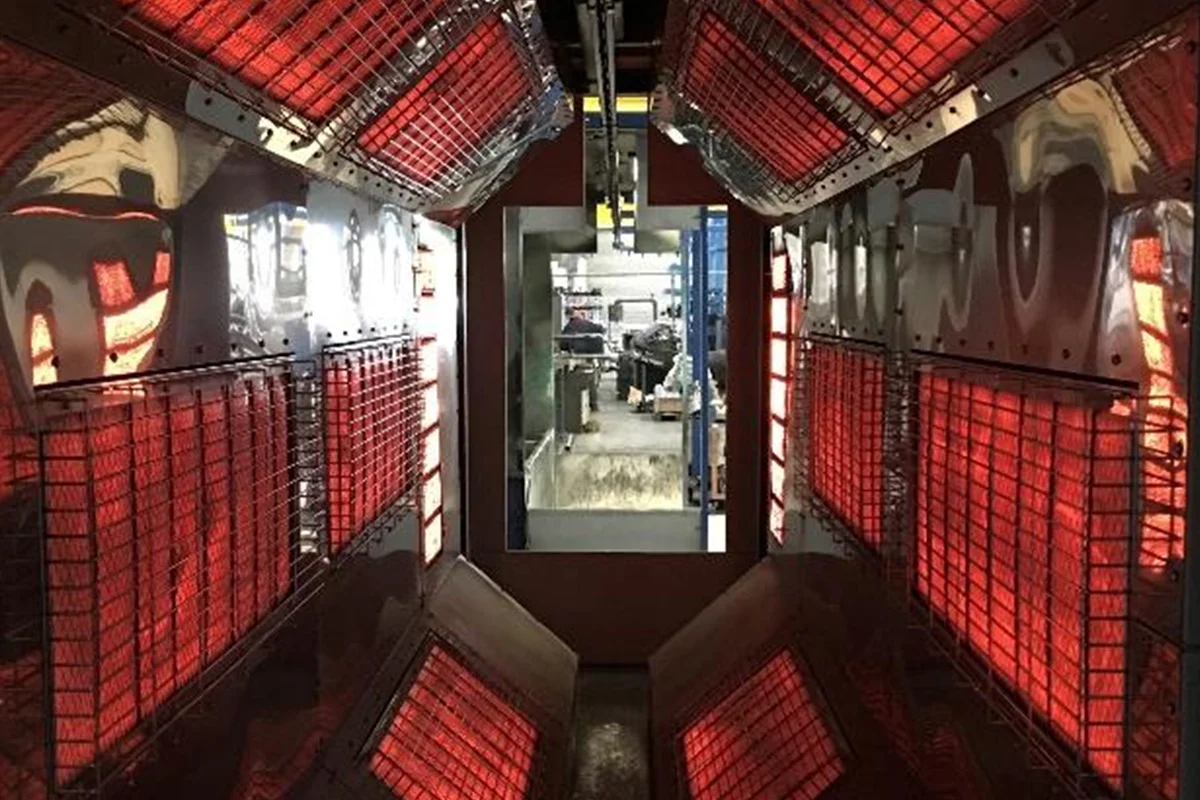
Clear records
history record

Products
Contact
Powder Infrared Curing
Powder Infrared Curing
I. Introduction
Powder infrared curing equipment is specifically designed for powder coatings, utilizing infrared radiation heating technology for rapid curing. It is widely used in industries such as metal surface treatment, automotive, home appliances, and furniture.
II. Application Areas
1. Powder Coatings
Metal Coating: Applied to metal surfaces in home appliances, automotive parts, building materials, and furniture.
Industrial Equipment: Suitable for surface treatment of machinery, pipelines, and steel structures.
2. Electronics Industry
Electronic Components: Used for coating and curing circuit boards, capacitors, and inductors.
Semiconductor Packaging: Applied in the curing of semiconductor packaging materials.
3. Composite Materials
Composite Products: Used for curing composite materials in aerospace, automotive, and sports equipment applications.
4. Other Fields
Medical Devices: Used for coating and curing certain medical instruments.
III. Technical Overview
1. Basic Principles
The equipment uses infrared radiation to directly heat the coating, rapidly reaching the curing temperature and allowing molecular crosslinking to form a durable coating. Infrared radiation has strong penetration, provides uniform heating, and ensures fast curing.
2. Core Process Flow
Powder Spraying
Electrostatic Spraying: Uses electrostatic adsorption to evenly apply powder onto the workpiece surface.
Fluidized Bed Spraying: Suitable for small workpieces, where powder adheres evenly using a fluidized bed process.
Infrared Preheating
Preheating: Uses infrared radiation to preheat the workpiece, allowing the powder to begin melting, preparing for the curing process.
Infrared Curing
Curing: Under infrared radiation, the powder fully melts and cures, forming a uniform coating.
Temperature Control: Ensures proper curing temperature and duration to avoid under-curing or over-burning.
Cooling
Natural Cooling: Workpieces cool naturally in the air.
Forced Cooling: Cooling is accelerated using fans or a water-cooling system.
IV. Technical Advantages
Rapid Heating: Infrared radiation penetrates the powder coating directly, enabling fast heating and reducing curing time, increasing production efficiency.
Uniform Heating: Infrared radiation ensures even heating across the surface, preventing localized overheating or under-curing and guaranteeing consistent coating quality.
Energy Efficiency and Environmental Protection: High heating efficiency with minimal energy loss, reducing overall energy consumption and operating costs while minimizing exhaust emissions.
Precision Control: Intelligent control systems precisely regulate temperature and curing time, ensuring a stable curing process and improved product quality.
Strong Adaptability: Suitable for various materials and complex-shaped workpieces, offering high production flexibility.
Easy Maintenance: Modular design simplifies maintenance and component replacement, lowering maintenance costs and downtime.
V. Development Trends
1. High Efficiency and Energy Saving
Equipment is evolving toward higher energy efficiency and lower consumption, utilizing advanced infrared heating technologies such as medium- and short-wave infrared radiation to improve heating efficiency and reduce energy waste.
2. Intelligent Control
Smart control systems are becoming standard, incorporating PLC, touchscreen interfaces, and IoT for precise temperature and time control, as well as remote monitoring and automation.
3. Modular Design
Equipment is shifting toward a modular design, allowing flexible adjustments and expansion based on production needs.
4. Environmental Protection and Safety
With increasingly strict environmental and safety regulations, equipment is designed to use low-emission materials and incorporate features that reduce harmful gas and dust emissions.
5. Multifunctional Integration
The trend toward integrated systems is growing, with equipment incorporating preheating, curing, and cooling into a single production line for improved efficiency and seamless operation.










